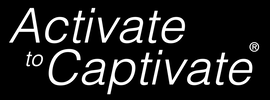|
As the leader of your group or organization, people look up to you. You set an example with everything you do. Not only with the large projects you are in charge of, but in smaller, more subtle ways as well. It may not be obvious, but if you are leading a team, it’s important to be aware of situations where your actions set up patterns that others will follow.
1. Introductions When a new team is meeting, it can be hard for people to feel comfortable enough to open up. Often a leader will start a meeting by asking someone to introduce themself to the group. Whatever information that first person gives (name, title, etc) is normally the same information everyone else will share. If you’d prefer people to share a story or more interesting background information, instead of relying on the first person you call on to rise to the occasion, just do it yourself. Start by sharing the information you’d like to know about your team. Then hand it over to someone else. That way, the team has an example to follow on what you’d like to hear. 2. Checking In During a meeting, especially when people aren’t very comfortable with each other, the first person who talks usually sets the pattern for the rest of the group. For example, if you ask everyone how their weekend went, and the first person responds with, “It was ok,” chances are that everyone else will also give a one sentence response. However, if you begin a meeting by describing a short story about how your weekend went and then open it up to the group, there is a higher probability that everyone else will also share a short story. 3. Emails Every relationship requires a different level of professionalism. When you are communicating via email, it’s important to realize that your team is looking to you to set the tone. If you expect formal emails with long explanations on how people arrived at certain decisions, you should be writing formal detailed emails as well. If you prefer quick, short and concise emails, those are the ones you should be sending. People will look to you to model the preferred communication style, so you want to be proactive on how it's established. We like patterns, and the first person to speak usually sets the tone. When you are leading, it’s important to realize where those key opportunities are. |
AuthorBri McWhorter is the Founder and CEO of Activate to Captivate. Categories
All
Videos
Archives
June 2024
|
Click to Contact
© 2014-2024 Activate to Captivate, LLC
All Rights Reserved
All Rights Reserved


 RSS Feed
RSS Feed
